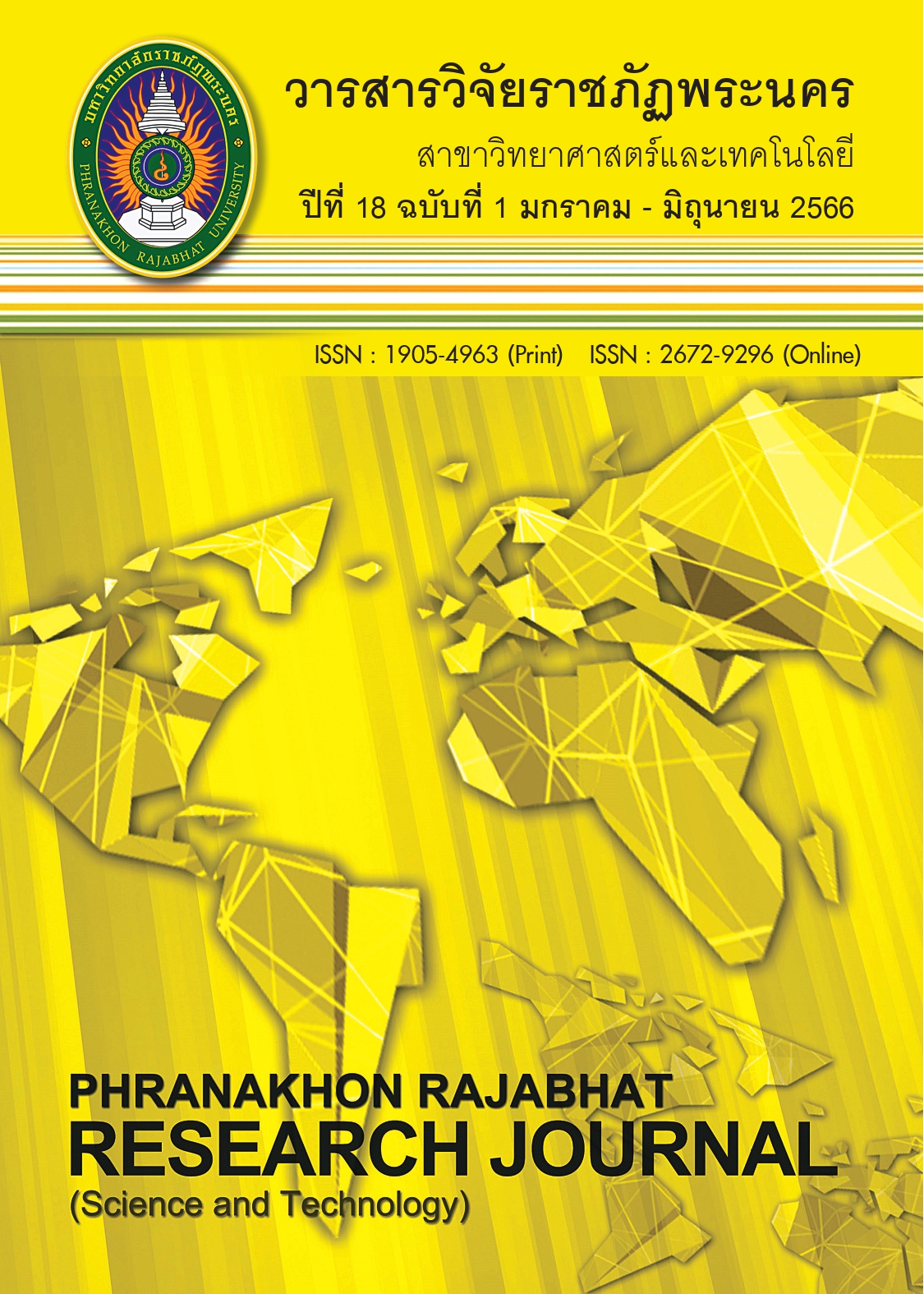PRODUCTION OF POROUS CERAMICS FROM SODA-LIME GLASS FOR COLLECTING AND RELEASING ESSENTIAL OILS
Keywords:
Soda lime glass, Porous ceramics, Porosity, Water absorption, Essential oilAbstract
This research aimed to produce porous ceramics from soda lime glass for collecting and releasing essential oils. The soda lime glass was ground into powders, then mixed with 10% polyvinyl alcohol solution in 1:1, 1:1.5, 1:2, 1:2.5, 1:3 and 1:3.5 (g:ml). These mixtures were molded by casting them into a silicone mold, dried, and calcined at 700 °C for 3 hours. It was found that the porous ceramics showed mesoporous structure with a diameter of more than 50 mm. The best porous ceramic sample in this work was the 1:2.5 sample, which showed the highest porosity (34.50%), highest water absorption values (21.43%) and lowest density (1.607 g/cm3). Then the kaffir lime and key lime oils were collected into the best porous ceramic sample by dropping essential oils into these ceramics. Studying the evaporation rates of both types of essential oil, it was found that the evaporation rates of the essential oils contained in the porous ceramic were higher than those of the essential oils in the atmosphere. The pores in the porous ceramics increased the evaporation rate of essential oils which also, increased the volatility in the atmosphere.
References
Booppha, B., Eittsayeam, S., Pengpat, K., & Chantawannakul, P. (2010). Development of bioactive ceramics to control mite and microbial diseases in bee farms. Advanced Materials Research, 93-94, 553-557.
Cruz-Valenzuela, M.R., Tapia-Rodríguez, M.R., Vazquez-Armenta, F.J., Silva-Espinoza, B.A., & Ayala-Zavala, J.F. (2016). Lime (Citrus aurantifolia) Oils. Essential Oils in Food Preservation, Flavor and Safety, 531–537.
Duanyai, S., Manok, S., & Rodpo, P. (2020). Antioxidant and Antimicrobial Activities of Essential Oil from Thai Herbs to Microorganisms Causing Dermatitis. KKU Science Journal, 48(1), 76-85. (In Thai)
Guechi, A., Achour, S., & Harabi, A. (2004). Effect of Temperature and Na2CO3 Additions on Sintering and Crystallisation of Anorthite. Key Engineering Materials, 264-268, 257–260
Janatova, A., Bernardos, A., Smid, J., Frankova, A., Lhotka, M., Kourimská, L., Pulkrabek, J., & Kloucek, P. (2015). Long-term antifungal activity of volatile essential oil components released from mesoporous silica materials. Industrial Crops and Products, 67, 216–220.
Khawgrib, S., Chaiyanan, S., Chaiyanan, S., Niyomtoon, I., & Patampa, S. (2021). Impact of PM2.5 on Building Hygiene, A Case Study of Chanthaburi National Archives. Phranakhon Rajabhat Research Journal (Science and Technology), 16(2), 34-44. (In Thai)
Li, Y., Rong, L., & Li, Y. (2001). Pore characteristics of porous NiTi alloy fabricated by combustion synthesis. Journal of Alloys and Compounds, 325(1-2), 259–262.
Mongkolkachit, C., & Sinjaroenlert, I. (2018). Porous ceramic. Retrieved from https://www.mtec.or.th/post-knowledges/52223/ [2566, 4 Apr.]
Monich, P. R., Romero, A. R., Höllen, D., & Bernardo, E. (2018). Porous glass-ceramics from alkali activation and sinter-crystallization of mixtures of waste glass and residues from plasma processing of municipal solid waste. Journal of Cleaner Production, 188, 871–878.
Punsukmtana, L., Markhapattanasin, I., Bangluang, V. (2013). A physical properties study of porous ceramics for the development of the fragrance ceramic. Bulletin of Applied Science, 2(2), 9-16. (In Thai)
Rungrojchaipon, P. (2011) Porous Materials?. Journal of Science Ladkrabang, 20(1), 60-69. (In Thai)
Samadi, M., Abidin, Z. Z., Yunus, R., Awang Biak, D. R., Yoshida, H., & Lok, E. H. (2017). Assessing the kinetic model of hydro-distillation and chemical composition of Aquilaria malaccensis leaves essential oil. Chinese Journal of Chemical Engineering, 25(2), 216–222.
Sopyan, I., Mel, M., Ramesh, S., & Khalid, K. A. (2007). Porous hydroxyapatite for artificial bone applications. Science and Technology of Advanced Materials, 8(1-2), 116–123.
Thonglem, T. (2010). Fabrication of porous bioactive glasses and glassceramics from non-silicate based glass system for artificial bone applications. (master's dissertation). Chiang Mai University, Chiang Mai.
Thonglem, S., Rujijanagul, G., Eitssayeam, S., Tunkasiri, T., & Pengpat, K. (2013). Effect of Camphor Addition on Mechanical Properties and Bioactivity of P2O5-CaO-Na2O Bioactive Glass. Integrated Ferroelectrics, 142(1), 135–143.
Downloads
Published
Issue
Section
License

This work is licensed under a Creative Commons Attribution-NonCommercial-NoDerivatives 4.0 International License.
โปรดกรอกเอกสารและลงนาม "หนังสือรับรองให้ตีพิมพ์บทความในวารสารวิจัยมหาวิทยาลัยราชภัฏพระนคร สาขาวิทยาศาสตร์และเทคโนโลยี" ก่อนการตีพิมพ์




